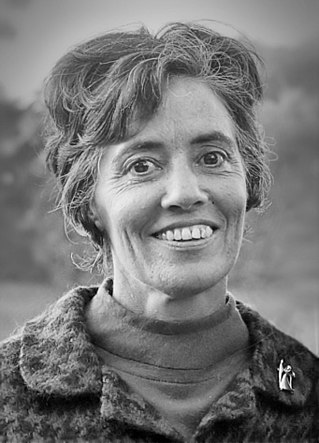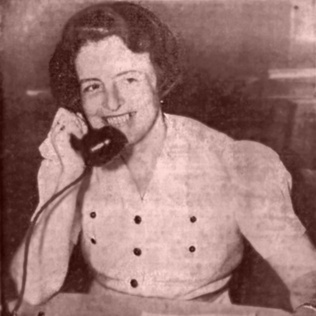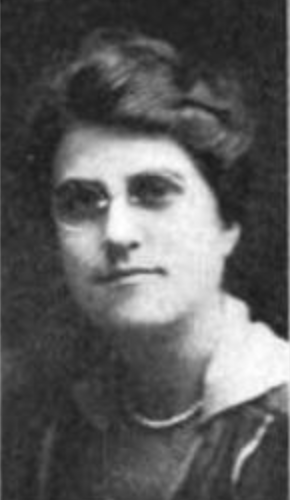Related Research Articles

A dishwasher is a machine that is used to clean dishware, cookware, and cutlery automatically. Unlike manual dishwashing, which relies on physical scrubbing to remove soiling, the mechanical dishwasher cleans by spraying hot water, typically between 45 and 75 °C, at the dishes, with lower temperatures of water used for delicate items.
Frigidaire Appliance Company is the American consumer and commercial home appliances brand subsidiary of multinational company Electrolux, a Swedish multinational home appliance manufacturer, headquartered in Stockholm.
Hilda Elsie Marguerite Patten,, was a British home economist, food writer and broadcaster. She was one of the earliest celebrity chefs who became known during World War II thanks to her programme on BBC Radio, where she shared recipes that could work within the limits imposed by war rationing. After the war, she was responsible for popularising the use of pressure cookers and her 170 published books have sold over 17 million copies.

Josephine Cochran was an American inventor who invented the first successful hand-powered dishwasher, which she designed and then constructed with the assistance of mechanic George Butters, who became one of her first employees.

Anna Margaret Glenn was an American advocate for people with disabilities and communication disorders and the wife of astronaut and senator John Glenn. A stutterer from an early age, Glenn was notable for raising awareness of stuttering and other disabilities among children and adults.

Helen Hooven Santmyer was an American writer, educator, and librarian. She is primarily known for her best-selling epic "...And Ladies of the Club", published when she was in her 80s.

Joseph Raymond Desch was an American electrical engineer and inventor. During World War II, he was Research Director of the project to design and manufacture the US Navy version of the bombe, a cryptanalytic machine designed to read communications enciphered by the German Enigma.
Dayton Public Schools is the school district in the U.S. state of Ohio that serves Dayton, Ohio. The district covers 49 square miles. Dayton Public Schools (DPS) is the 12th largest PreK-12 district in the state, with a 2017–2018 enrollment of about 12571. DPS has 28 schools, 18 PreK-8 schools, 2 middle schools, 6 high schools, and 2 special centers.

A dish drying cabinet is a piece of kitchen shelving placed above the sink, with an open bottom and shelves made of steel wire or dowels to allow washed dishes set within to drip into the sink and air dry.

Mary Engle Pennington was an American bacteriological chemist, food scientist and refrigeration engineer. She was a pioneer in the preservation, handling, storage and transportation of perishable foods and the first female lab chief at the U.S. Food and Drug Administration. She was awarded 5 patents, received the Notable Service Medal from President Herbert Hoover and the Garvin-Olin Medal from the American Chemical Society. She is an inductee of the National Inventor's Hall of Fame, the National Women's Hall of Fame and the ASHRAE Hall of Fame.

The Thor washing machine was the first electric clothes washer sold commercially in the United States. Produced by the Chicago-based Hurley Electric Laundry Equipment Company, the 1907 Thor is believed to be the first electrically powered washer ever manufactured, crediting Hurley as the inventor of the first automatic washing machine. Designed by Hurley engineer Alva J. Fisher, a patent for the new electric Thor was issued on August 9, 1910, three years after its initial invention.

Winston Laverne Shelton was an American inventor, electrical engineer and entrepreneur who was awarded 76 US patents as an individual or as part of a team, as well as many corresponding patents. Shelton's patents have had an impact relating to home washing machines and the preparation of food in both the Quick Service Restaurant (QSR) industry and fine dining. Technologies Shelton developed while an engineer at General Electric are still in use after more than fifty years. His patent for the modern "Washing Machine", licensed in 1965 to General Electric has been referenced in over 40 subsequent patents.
The Fierce Dispute is a 1929 novel by Helen Hooven Santmyer. Her second novel, it is set around 1900 in an unnamed town in Ohio.

Bess Bolden Walcott (1886-1988) was an American educator, librarian, museum curator and activist who helped establish the historical significance of the Tuskegee University. Recruited by Booker T. Washington to help him coordinate his library and teach science, she remained at the institute until 1962, but continued her service into the 1970s. Throughout her fifty-four year career at Tuskegee, she organized Washington's library, taught science and English at the institute, served as founder and editor of two of the major campus publications, directed public relations, established the Red Cross chapter, curated the George Washington Carver collection and museum and assisted in Tuskegee being placed on the National Register of Historic Places.

Thyrsa Anne Frazier Svager was an American academic who was one of the first African-American woman to gain a PhD in mathematics. Born in Ohio, she graduated from high school at the age of 16, going to Antioch College in Ohio and then doing her postgraduate degrees at Ohio State University. Frazier Svager was the head of the Department of Mathematics at Central State University (CSU) in Ohio for decades, ending her academic career as provost and dean for academic affairs. She and her husband, physics professor Aleksandar Svager, invested one of their salaries during their careers to build a legacy for scholarships. After her death, the Thyrsa Frazier Svager Fund was established to provide scholarships for African-American women majoring in mathematics.

Stewed tomatoes is a dish made by cooking tomatoes in a stew. It is often cooked with garlic and herbs, and consumed with bread or meat. It is eaten as either a main dish or a side dish. Stewed tomatoes are sometimes prepared in the United States on occasions such as Thanksgiving.

Mary Catherine Juhas is an American engineer. She is an associate vice president in the Office of Research and associate professor of materials science and engineering in the College of Engineering at Ohio State University. She is a Fellow of the American Society for Metals and inducted into the Ohio Women's Hall of Fame.
In the 1950s, commercial cookbooks gained popularity in the United States. These cookbooks frequently suggested the use of packaged food and electric appliances, which had become more available due to the post-war economic boom. Cookbooks reflected these changes. Betty Crocker and Julia Child became popular icons in American culture through their cookbooks and the media during this era. Cookbooks also reflected many cultural trends of the 1950s, especially typical gender roles and racial identities. Many cookbooks were addressed to the white, middle-class housewife who cooked for her family in their suburban home. These cookbooks often excluded African-American, immigrant, and rural women. For them, handwritten cookbooks served as both personal histories and a means to express their views on politics and society. Meanwhile, advertisements promoted the racial stereotype of the “black mammy” that de-feminized African-American cooks in white households. Ethnic immigrants were also debased as European Americans baked their distinct cuisines into generic casseroles.

M. Elsa Gardner was an American aeronautical engineer. She was the first woman admitted as a full member of the Engineers Club of Dayton.

Faith Robinson Lanman Gorrell was an American home economist and educator. She was director of the School of Home Economics at Ohio State University from 1929 to 1945.
References
- 1 2 3 4 5 6 7 "Ohio Women's Hall of Fame | State Archives | Ohio History Connection". resources.ohiohistory.org. Retrieved 2022-03-25.
- 1 2 3 "Margaret J. Andrew Memorial Scholarship for Culinary Students - Sinclair's Online Scholarship Application". sinclair.academicworks.com. Retrieved 2022-03-25.
- 1 2 3 4 “Margaret J. Andrew, 1908 – 2000". Obituaries, Xenia Daily Gazette. (2000, September 7). Xenia Daily Gazette Newspaper Archives.
- 1 2 3 4 5 6 7 "Overcoming Obstacles: Dayton Women Inventors". udayton.edu. Retrieved 2022-03-25.
- ↑ US 2910207,Andrew, Margaret J.,"Dish rack for domestic appliance",published 1959-10-27, assigned to General Motors